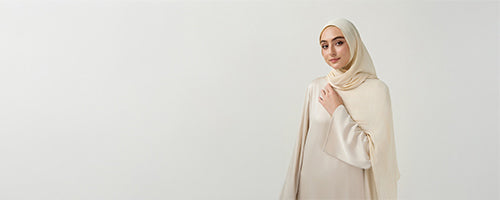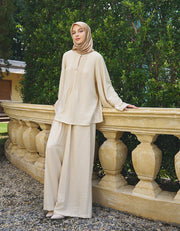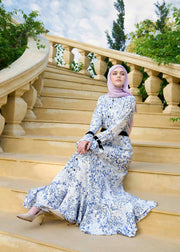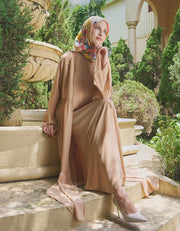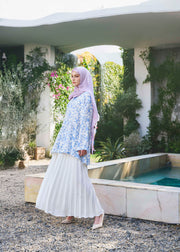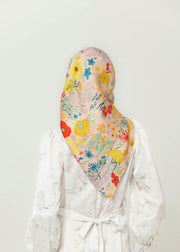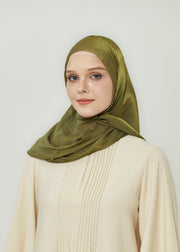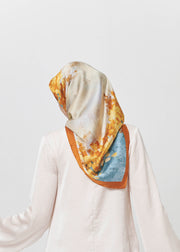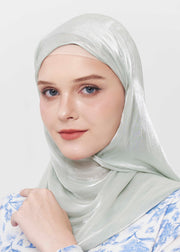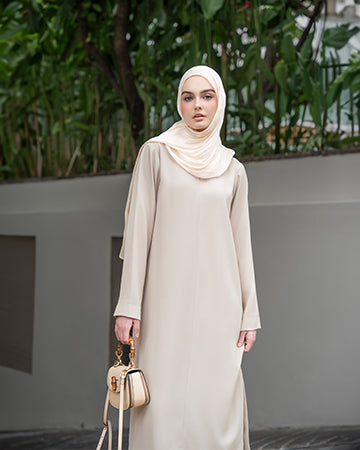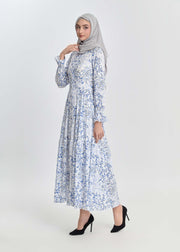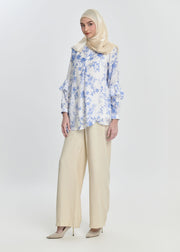Silk Hijab vs Satin: What’s Best for Islamic Fashion?
Choosing the right hijab fabric can transform your overall look and comfort in Islamic fashion. Among the many options available, silk and satin hijabs stand out for their elegance, shine, and versatility. While both fabrics exude luxury, they differ in texture, durability, cost, and styling potential. This article explores silk hijab vs satin hijab in detail, helping you decide which option best suits your modest wardrobe and lifestyle.
Silk Hijab vs Satin: Key Differences
Silk and satin may appear similar at first glance due to their glossy finish, but they are not the same. Silk is a natural fiber produced from silkworms, while satin is a weaving technique usually applied to synthetic fibers like polyester or acetate. This fundamental difference affects how the fabrics feel, perform, and complement Islamic fashion outfits.
-
Silk Hijab: Soft, breathable, natural sheen, higher cost.
-
Satin Hijab: Smooth, glossy finish, less breathable, more affordable.
Understanding these differences ensures that Muslim women make informed choices when selecting hijabs for everyday wear or special occasions.

Silk Hijab vs Satin: Key Differences
The Luxury Appeal of Silk Hijabs
Silk hijabs are often considered a premium choice in Islamic fashion. They are lightweight, elegant, and provide a natural drape that enhances both casual and formal outfits. The breathability of silk makes it suitable for warm climates, preventing discomfort during long wear.
Benefits of Silk Hijabs:
-
Naturally breathable, ideal for hot weather.
-
Timeless elegance with a soft, refined texture.
-
Long-lasting when cared for properly.
-
Versatile for both professional and festive occasions.
For Muslim women who value luxury and comfort, silk hijabs remain a classic investment.

The Luxury Appeal of Silk Hijabs
The Practicality of Satin Hijabs
Satin hijabs, on the other hand, are valued for their affordability and wide availability. Made from synthetic fibers, satin offers a glossy, polished look similar to silk but at a fraction of the price. While less breathable, satin is easier to maintain and often comes in a wider variety of colors and patterns.
Benefits of Satin Hijabs:
-
Affordable alternative to silk.
-
High shine effect, perfect for evening wear.
-
Available in many shades and prints.
-
Easier to care for compared to natural silk.
For those experimenting with modest fashion or building a hijab collection on a budget, satin is a practical choice.

The Practicality of Satin Hijabs
Comfort and Everyday Wear: Silk vs Satin
When it comes to everyday use, silk tends to outperform satin. Its natural fibers make it gentler on the skin, especially for women with sensitive skin or those who wear hijabs for long hours. Satin, although stylish, can sometimes trap heat and feel less comfortable during warm days.
-
Best for Everyday Comfort: Silk hijab.
-
Best for Special Occasions: Satin hijab (especially when paired with formal abayas or gowns).
Durability and Maintenance
Durability is another deciding factor in the silk hijab vs satin debate.
-
Silk: Requires delicate care, hand washing, and proper storage to retain its luxurious quality.
-
Satin: More durable in terms of handling and washing, as most satin hijabs are machine washable.
If you prefer low-maintenance fabrics, satin may suit you better. However, if you’re willing to invest time in careful care, silk hijabs reward you with long-term elegance.
Styling Options with Silk and Satin Hijabs
Both silk and satin hijabs can elevate Islamic fashion when styled correctly.
-
Silk Hijab Styling: Works well with office wear, professional looks, or traditional Islamic fashion outfits where subtle elegance is key.
-
Satin Hijab Styling: Ideal for weddings, parties, or evening events where a glossy, eye-catching effect is desired.
Pairing silk with modest dresses or abayas creates an understated luxury, while satin makes a bold statement under bright lights.
Silk Hijab vs Satin: Which One Should You Choose?
Your choice between silk and satin hijabs depends on your lifestyle, budget, and personal preferences.
-
Choose Silk Hijab if you want breathable, natural elegance that complements everyday modest wear.
-
Choose Satin Hijab if you want a budget-friendly, shiny option for special events in Islamic fashion.
Many Muslim women keep both in their wardrobes to suit different occasions and styling needs.
Conclusion: Finding Balance in Islamic Fashion
Both silk and satin hijabs bring value to Islamic fashion, but in different ways. Silk offers natural elegance, comfort, and long-term luxury, while satin provides affordability, shine, and versatility for formal occasions. Instead of choosing one over the other, consider incorporating both into your modest fashion collection for maximum flexibility.
To explore elegant silk hijabs and modern modest fashion designs, visit Minnaba, where timeless quality meets Islamic fashion.

